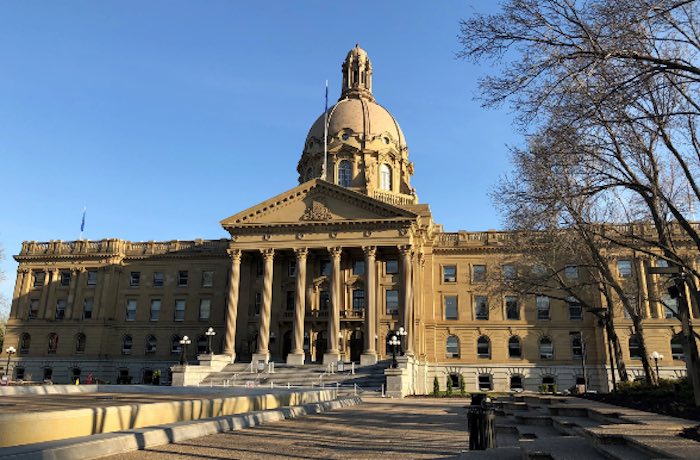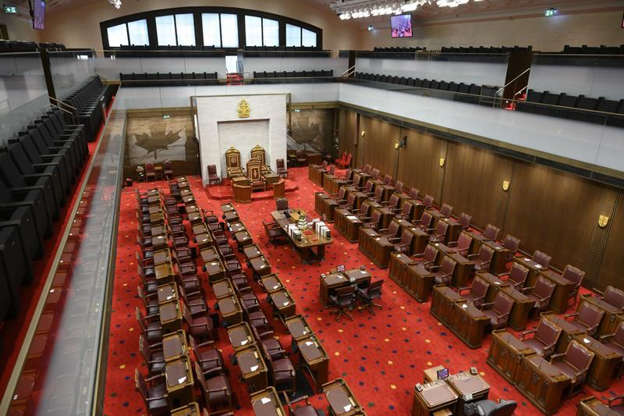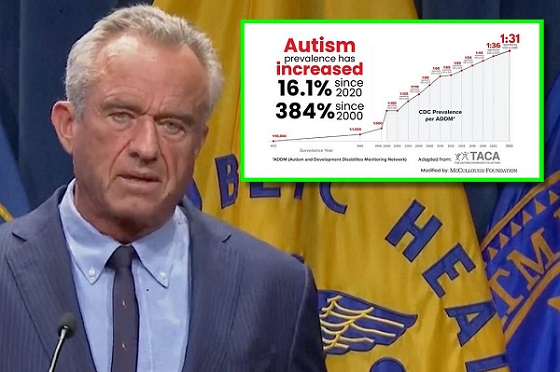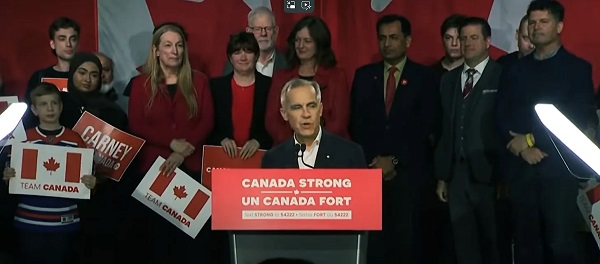Alberta
Alberta fighting federal “unconstitutional intrusion” into provincial jurisdiction

Alberta to fight federal plastics ban once more
Alberta’s government will continue defending the province’s constitutional jurisdiction and economy by intervening in Ottawa’s appeal of the Federal Court’s ruling on plastics.
On Nov. 16, the Federal Court of Canada ruled that the federal order-in-council classifying plastics as toxic is not only unreasonable but unconstitutional. The federal government has chosen to appeal this decision, ignoring calls from Alberta and others to accept the court’s decision.
As a result, Alberta’s government will participate in the appeal and will argue that the federal government’s decision to label plastic as a “toxic substance” is an unconstitutional intrusion into provincial jurisdiction.
“It is past time for Ottawa to listen. We have told them they are overreaching their jurisdiction, the private sector has told them so, and so have both the Supreme Court and the Federal Court. Ottawa cannot assume regulatory authority over any substance simply by designating it as toxic. We will continue to push back against Ottawa’s unconstitutional actions, including through this legal action, until they listen.”
The toxic designation and bans have also had a detrimental impact on Alberta’s economy. Alberta’s Industrial Heartland Association estimates the designation will potentially jeopardize more than $30 billion in capital investment in the petrochemical sector by 2030. Those risks would also put Albertan and Canadian workers at risk of losing their jobs.
“The Federal Court clearly ruled that the federal government’s plastics ban policies were unconstitutional. The federal government’s environmental policies and constitutional overreach have been heavily criticized and this ruling further confirms the indisputable nature of provincial jurisdiction in these matters. We are intervening in this appeal and will continue to participate wherever and whenever necessary to protect Alberta’s interests.”
In addition to intervening in the appeal, Alberta will monitor any further legal action taken to remove plastic manufactured items from the current Schedule 1 of the Canadian Environmental Protection Act. Several Calgary-based companies producing compostable plastic bags are now caught in the ban and will be barred from supplying Calgarians with low-emissions alternatives to traditional plastic shopping bags.
“Instead of listening to the courts and to Canadians, the federal government has chosen overreach once again. We will continue standing up for our constitutional jurisdiction while focusing on more effective ways to reduce plastic waste and keep it out of landfills.”
Alberta is committed to reducing plastic waste through initiatives like extended producer responsibility, which encourages businesses to find new ways to recycle materials and reduce waste. The province also advocates for strategies that create economies of scale, promote recycled content and develop local markets for transformed plastic waste.
Quick facts
- On April 23, 2021, the administrator in council issued an order-in-council directing that “plastic manufactured items” be added to Schedule 1 of the Canadian Environmental Protection Act, 1999 (CEPA).
- The category of plastic manufactured items includes every piece of plastic that enters Alberta.
- Once a substance is designated as toxic under CEPA, CEPA allows the federal government to make regulations regulating every aspect of that substance’s life, from manufacture to sale to use and to disposal.
- Canada subsequently enacted the Single-use Plastics Prohibition Regulations (SUPPR) prohibiting the manufacture, import and sale of six single-use plastics. SUPPR is only valid if “plastic manufactured items” is listed as toxic on Schedule 1 of CEPA.
- The Responsible Plastic Use Coalition, Dow, Imperial Oil and Nova applied for a judicial review of the order. They challenged it as unreasonable on administrative law grounds and as unconstitutional on division of powers grounds.
- On Sept. 7, 2022, Alberta intervened in the application to address the constitutional questions. Saskatchewan intervened on Oct. 24, 2022.
- The application was heard March 7-9, 2023, and the court reserved its decision.
- On Nov. 16, the federal Court of Canada issued its decision. Justice Angela Furlanetto concluded that the order adding “plastic manufactured items” to the Schedule 1 was both unreasonable from an administrative law perspective, and unconstitutional.
Alberta
Made in Alberta! Province makes it easier to support local products with Buy Local program

Show your Alberta side. Buy Local. |
When the going gets tough, Albertans stick together. That’s why Alberta’s government is launching a new campaign to benefit hard-working Albertans.
Global uncertainty is threatening the livelihoods of hard-working Alberta farmers, ranchers, processors and their families. The ‘Buy Local’ campaign, recently launched by Alberta’s government, encourages consumers to eat, drink and buy local to show our unified support for the province’s agriculture and food industry.
The government’s ‘Buy Local’ campaign encourages consumers to buy products from Alberta’s hard-working farmers, ranchers and food processors that produce safe, nutritious food for Albertans, Canadians and the world.
“It’s time to let these hard-working Albertans know we have their back. Now, more than ever, we need to shop local and buy made-in-Alberta products. The next time you are grocery shopping or go out for dinner or a drink with your friends or family, support local to demonstrate your Alberta pride. We are pleased tariffs don’t impact the ag industry right now and will keep advocating for our ag industry.”
Alberta’s government supports consumer choice. We are providing tools to help folks easily identify Alberta- and Canadian-made foods and products. Choosing local products keeps Albertans’ hard-earned dollars in our province. Whether it is farm-fresh vegetables, potatoes, honey, craft beer, frozen food or our world-renowned beef, Alberta has an abundance of fresh foods produced right on our doorstep.
Quick facts
- This summer, Albertans can support local at more than 150 farmers’ markets across the province and meet the folks who make, bake and grow our food.
- In March 2023, the Alberta government launched the ‘Made in Alberta’ voluntary food and beverage labelling program to support local agriculture and food sectors.
- Through direct connections with processors, the program has created the momentum to continue expanding consumer awareness about the ‘Made in Alberta’ label to help shoppers quickly identify foods and beverages produced in our province.
- Made in Alberta product catalogue website
Related information
Alberta
Province to expand services provided by Alberta Sheriffs: New policing option for municipalities

Expanding municipal police service options |
Proposed amendments would help ensure Alberta’s evolving public safety needs are met while also giving municipalities more options for local policing.
As first announced with the introduction of the Public Safety Statutes Amendment Act, 2024, Alberta’s government is considering creating a new independent agency police service to assume the police-like duties currently performed by Alberta Sheriffs. If passed, Bill 49 would lay additional groundwork for the new police service.
Proposed amendments to the Police Act recognize the unique challenges faced by different communities and seek to empower local governments to adopt strategies that effectively respond to their specific safety concerns, enhancing overall public safety across the province.
If passed, Bill 49 would specify that the new agency would be a Crown corporation with an independent board of directors to oversee its day-to-day operations. The new agency would be operationally independent from the government, consistent with all police services in Alberta. Unlike the Alberta Sheriffs, officers in the new police service would be directly employed by the police service rather than by the government.
“With this bill, we are taking the necessary steps to address the unique public safety concerns in communities across Alberta. As we work towards creating an independent agency police service, we are providing an essential component of Alberta’s police framework for years to come. Our aim is for the new agency is to ensure that Albertans are safe in their communities and receive the best possible service when they need it most.”
Additional amendments would allow municipalities to select the new agency as their local police service once it becomes fully operational and the necessary standards, capacity and frameworks are in place. Alberta’s government is committed to ensuring the new agency works collaboratively with all police services to meet the province’s evolving public safety needs and improve law enforcement response times, particularly in rural communities. While the RCMP would remain the official provincial police service, municipalities would have a new option for their local policing needs.
Once established, the agency would strengthen Alberta’s existing policing model and complement the province’s current police services, which include the RCMP, Indigenous police services and municipal police. It would help fill gaps and ensure law enforcement resources are deployed efficiently across the province.
Related information
-

 2025 Federal Election1 day ago
2025 Federal Election1 day agoNeil Young + Carney / Freedom Bros
-

 Business1 day ago
Business1 day agoDOGE Is Ending The ‘Eternal Life’ Of Government
-

 espionage17 hours ago
espionage17 hours agoEx-NYPD Cop Jailed in Beijing’s Transnational Repatriation Plot, Canada Remains Soft Target
-

 2025 Federal Election2 days ago
2025 Federal Election2 days agoRCMP Whistleblowers Accuse Members of Mark Carney’s Inner Circle of Security Breaches and Surveillance
-

 2025 Federal Election1 day ago
2025 Federal Election1 day agoTucker Carlson Interviews Maxime Bernier: Trump’s Tariffs, Mass Immigration, and the Oncoming Canadian Revolution
-

 2025 Federal Election1 day ago
2025 Federal Election1 day agoCanada drops retaliatory tariffs on automakers, pauses other tariffs
-

 2025 Federal Election2 days ago
2025 Federal Election2 days agoBureau Exclusive: Chinese Election Interference Network Tied to Senate Breach Investigation
-

 Autism2 days ago
Autism2 days agoRFK Jr. Exposes a Chilling New Autism Reality








